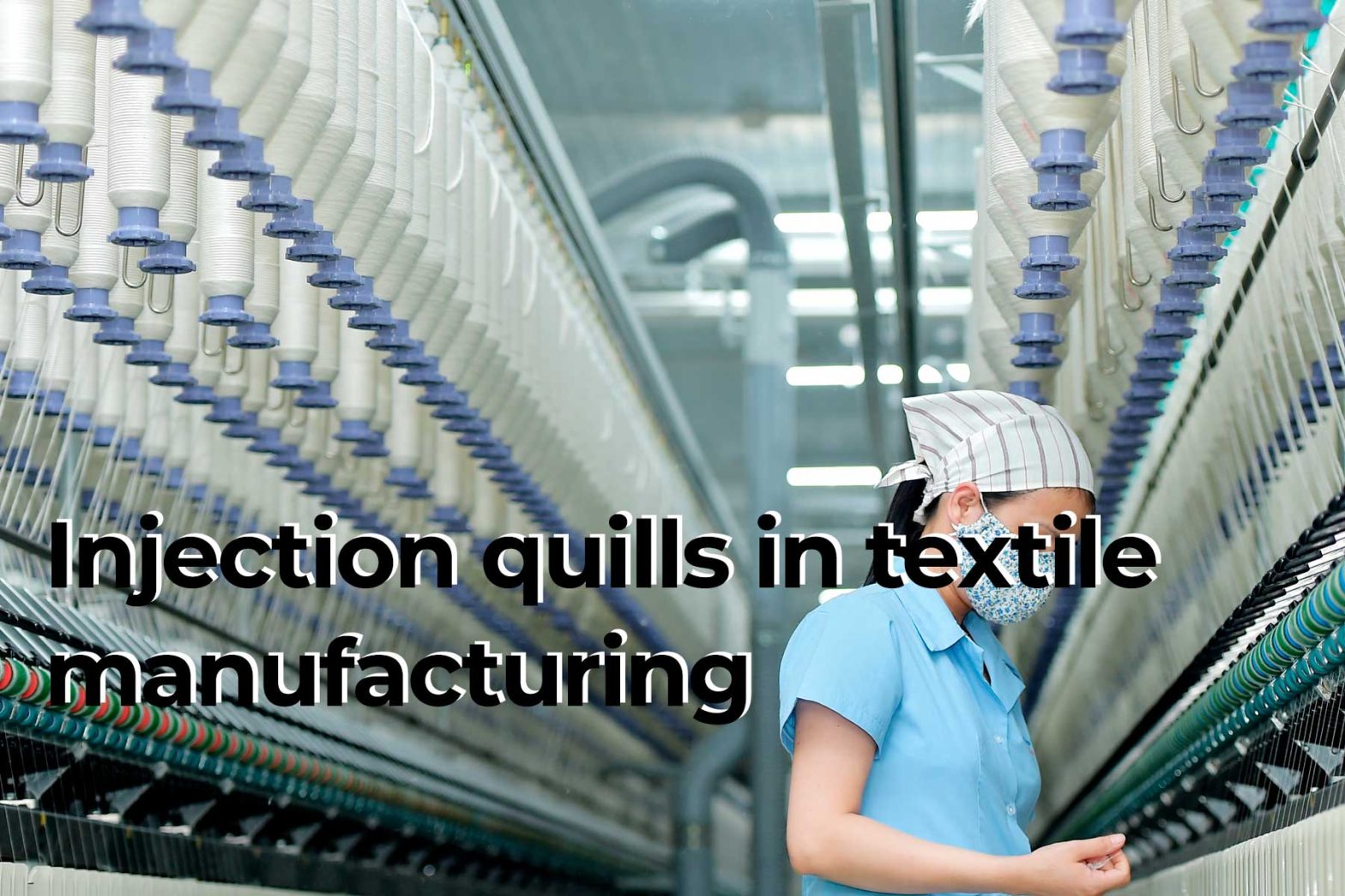Injection quills are an important component in textile manufacturing, as they are used to inject dyes and chemicals into the fibers of textiles. In recent years, there have been several advancements in technology and materials that have improved the performance and durability of injection quills.
One major advancement has been the development of new materials for the construction of injection quills. Traditional injection quills were typically made from metal, such as stainless steel or brass. However, these materials have a number of drawbacks, including the potential for corrosion and the difficulty in achieving a precise, consistent flow of dye or chemical through the quill.
To address these issues, researchers have developed new materials for injection quills that are more resistant to corrosion and can provide a more consistent flow of dye or chemical. These materials include ceramic and plastic compounds, such as PTFE (polytetrafluoroethylene) and PFA (perfluoroalkoxy). These materials are highly resistant to chemical corrosion and can provide a consistent flow of dye or chemical, making them ideal for use in textile manufacturing.
Another major advancement in injection quill technology has been the development of new design features that improve the performance of the quill. For example, some quills now feature a tapered design, which helps to reduce the pressure required to inject the dye or chemical into the textile. This can help to reduce the risk of damage to the textile, as well as improve the overall efficiency of the injection process.
In addition to these advancements, there are also several new technologies that are being developed to improve the performance of injection quills. For example, some researchers are working on developing new types of injection nozzles that can be used with quills. These nozzles are designed to provide a more precise and consistent flow of dye or chemical, which can help to improve the quality and consistency of the final textile product.
Another area of research that is gaining attention is the use of 3D printing in the manufacture of injection quills. 3D printing allows for the creation of intricate, complex designs that would be difficult to achieve with traditional manufacturing methods. This technology is particularly useful for the production of custom-designed quills that are tailored to the specific needs of a particular textile manufacturing process.
Finally, there is a growing interest in using smart materials and sensors in the manufacturing of injection quills. These materials can change their properties in response to different stimuli, such as temperature, pressure, or chemical exposure. This allows for real-time monitoring and control of the injection process, which can improve the quality and consistency of the final textile product.
Overall, there have been many advancements in technology and materials for injection quills in textile manufacturing in recent years. These advancements have improved the performance and durability of injection quills, while also making it possible to achieve a more precise and consistent flow of dye or chemical into the textile. As a result, textile manufacturers are able to produce higher-quality products with less waste and at a lower cost.
Crystal Industrial Syndicate from India, makes a range of custom injection quills for a variety of industrial processes. Our injection quills are manufactured in India and comply with the world’s most stringent certifications. Our products are installed around the world, from North America and Europe to Africa and the Middle East. Contact us to know more about how we can support your injection quills requirements. Contact us
Copyright © 2023 by Crystal Industrial Syndicate Pvt Ltd. All rights reserved. www.crystalindustrial.in
